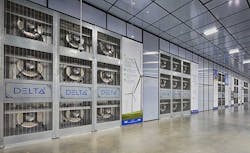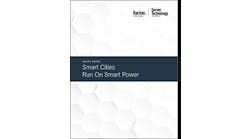Better Business, Better World: Why Sustainability-Linked Financing Will Influence the Data Center Industry
According to a Bloomberg report, in the first half of 2021, the issuance of sustainable debt reached $825 billion, which represents an eight percent increase over the $759 billion issued through all of 2020.
Sustainable finance refers to any form of financial service integrating environmental, social and governance (ESG) criteria into business or investment decisions for the lasting benefit of both customers and society. Such criteria can refer to climate change mitigation; issues surrounding diversity, inclusiveness, and community investment; and ensuring social and environmental considerations in the governance of both public and private institutions.
While a sustainability-linked loan can be used for any purpose, the hallmark of this debt instrument is that the borrower’s performance is measured against predetermined sustainability objectives which affect the interest rate, incentivizing improved performance over time. This is unlike a green loan that is made available exclusively to finance or refinance new or existing green projects, but where pricing is not linked to any explicitly stated objectives. In the environmental realm, common sustainability-linked loan objectives could include reducing greenhouse gas emissions and water consumption, and increasing the amount of renewable energy generated or used by the borrower.
The first sustainability-link loan in the corporate market was issued for Amsterdam-based Philips in 2017, with a group of 16 financial institutions. Although sustainability-linked financing is more common in the European loan market, this past spring, General Mills announced that it had closed the first-ever sustainability-linked loan facility for a U.S. consumer packaged goods company. Underscoring the ambition of putting one’s money where one’s mouth is, sustainability-linked loan issuance hit $350 billion in the first half of 2021, compared to $197 billion in all of last year.
Since data centers account for a significant portion of the energy use and carbon dioxide emissions globally, data center providers have a responsibility to manage their environmental impact and other ESG-related risks in their business practices.
Pulling One’s Weight, Environmentally and Socially
To understand how sustainability-linked financing works in practice, consider my firm’s experience.
Last year Aligned completed the first-ever green data center securitization and first-ever sustainability-linked financing.
At Aligned, a component of the interest rates on our $1 billion credit facility is directly tied with our core ESG objectives, and how well we perform on our renewable energy, sustainability reporting, and safety key performance indicators (KPIs). For example, we’ve made a commitment to match 100 percent of the company’s annual energy consumption to zero-carbon renewable energy. We’ve pledged to uphold transparency and continuous improvement across sustainability best practices, including reporting. This target aligns the company’s ESG reporting efforts with a leading global standard, maximizing consistency in ESG disclosure for Aligned stakeholders. If we deliver on our commitments, we benefit from discounted interest rates; if we don’t, the rates either stay the same or go up, depending on the actual performance.
Aligned was recently notified that we had met and successfully exceeded all of our core ESG objectives and KPIs, which will be reflected on our upcoming GRESB evaluation, a global assessment benchmarking the ESG performance of real assets, which we are strongly encouraged to do on an annual basis by our capital partner. GRESB’s real estate benchmark covers more than 1,200 property companies, real estate investment trusts (REITs), and developers, and more than 540 infrastructure funds and assets, which combined represent more than $5 trillion in real asset value.
The elevation of the concept and practice of environmentally and socially sustainable growth into mainstream public consciousness is undeniable. Not surprisingly, companies are increasingly competing on sustainability relative objectives. Hence, data center providers will need to start demonstrating that they are pulling their weight, environmentally and socially, or risk falling out of favor with customers and investors alike.
Anubhav Raj is CFO of Aligned. Anubhav is an expert in investment banking, IPOs and financial and operational strategy. As the Chief Financial Officer for Aligned, Anubhav is responsible for the company’s financial and operational strategy.





